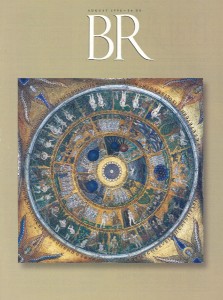Retrieving the World of Ancient Judaism
For the historian of religion, the closing of the canon was an unmitigated disaster, leading to the loss of a rich literature.

Now that the full corpus of the Dead Sea Scrolls is available to everyone, we can appreciate as never before the richness and variety of Jewish literature at the turn of the era. Of the approximately one thousand manuscripts that were hidden in the caves near Qumran, only about 600 can be recovered in significant part. About one-third of these are biblical manuscripts. The great bulk of the remainder contain texts that had been lost for nearly two thousand years. Other Jewish writings of the period between the Maccabees (second century B.C.E.) and the Mishnah (200 C.E.) were also lost for centuries and have been recovered only in translations in such languages as Syriac, Ethiopic and Old Church Slavonic. These latter writings, which mainly fall in the category of Pseudepigrapha (writings attributed to famous ancient figures, such as Enoch), were preserved by Christians and often contain Christian interpolations that are difficult to disentangle from the Jewish originals. So the literature of a crucial period of human history, which saw the birth of Christianity and the formation of rabbinic Judaism, was lost for centuries and can now be recovered only with difficulty from fragmentary manuscripts and problematic translations.
Already a library member? Log in here.
Institution user? Log in with your IP address.

